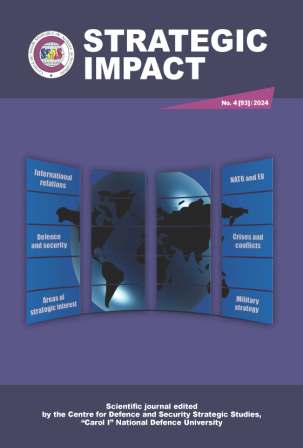GROUP COHESION IN INTERNATIONAL VOLUNTEER MILITARY UNITS: INSIGHTS FROM THE UKRAINE CONFLICT
DOI:
https://doi.org/10.53477/1842-9904-24-18Keywords:
Volunteer Military Units, Group Cohesion, Swift Trust, Leadership, Stress-Induced Bonding, Ukraine Conflict, Rapid Mobilization, Combat Stress, Resilience in High-Stakes EnvironmentsAbstract
This paper investigates the emergence and maintenance of group cohesion in
international volunteer military units, using the Ukraine conflict as a focal case.
Conventional models of military cohesion emphasize prolonged training, shared
routines, and extensive interpersonal bonding, processes generally unavailable to rapidly assembled volunteer forces. The study synthesizes the adaptive mechanisms enabling cohesive action in these unconventional units, through a documentation analysis of scholarly articles, field reports, and publicly available interviews with international volunteer fighters in Ukraine.
The findings highlight three primary pathways that compensate for the absence
of traditional cohesion-building processes. Firstly, swift trust, based on role-based expectations and urgent shared objectives, allows strangers to form immediate functional relationships. Secondly, leadership-driven cohesion emerges when leaders act as psychological anchors, instilling unity and providing guidance in high-stress settings; strong leadership effectively substitutes for weaker peer bonds. Thirdly, stress-induced bonding underscores how shared combat hardships forge powerful interpersonal links, solidifying group solidarity despite members’ diverse backgrounds and limited collective experience.
These insights expand conventional models of military group dynamics and have
practical implications for training, organizational design, and psychological support in crisis-driven environments. By elucidating how international volunteer units in Ukraine cohere under minimal pre-deployment preparation, the paper challenges the assumptionthat lengthy, structured conditioning is the sole path to effective military teamwork. In doing so, it offers strategic lessons for future conflict scenarios involving spontaneously formed units, underscoring the potential for rapid yet resilient group cohesion through clearly defined roles, adaptive leadership, and collective stress experiences.





